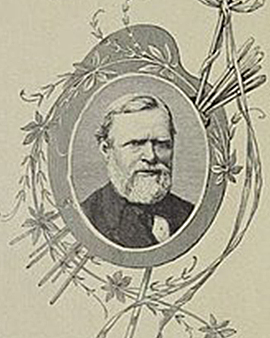With an admirable delicacy of hand and an extraordinary ability to capture architecture and landscapes in watercolor, Carl Friedrich Heinrich Werner left an unmistakable legacy in the world of art. Born in Weimar on October 4, 1808, Werner trained in painting under the tutelage of Julius Schnorr von Carolsfeld in Leipzig before briefly turning to architecture in Munich. His true passion, however, lay in colorful watercolors, to which he returned, earning him a scholarship for a life-changing trip to Italy.
The heart of Italy opened a world of opportunity and artistic enlightenment to Werner. He opened his own studio in the lagoons and canals of Venice and established himself as a renowned watercolor painter. His art, lovingly and accurately reproduced in their fine art prints, found favor throughout Europe and was even recognized by the New Watercolour Society in England. The canvas of his artistic ambitions continued to expand as Werner began to travel the rest of the world. He left his mark on Spain and Palestine, traveling to Egypt in 1862 and returning there for a longer trip in 1864. Of particular note are his watercolors of Jerusalem, where he was one of the few non-Muslims to gain access to the interior of the Dome of the Rock. This impressive artwork became part of his work "Jerusalem and the Holy Places" published in London. Further travels took him to Greece and Sicily and finally back to Leipzig, where he became a professor at the Academy and died in 1894.
Among his outstanding works are "Venice in its Zenith and Decline," "The Ducal Palace with a Scene from The Merchant of Venice," "The Triumphal Procession of Doge Cantarini," "The Zisa Hall in Palermo," "The Lion Court of the Alhambra," and "Jerusalem and the Holy Land," an extensive work of 30 designs, published with text and colored plates. Each of these works of art, whether as a faithful art print or in its original form, reflects Werner's extraordinary talent and his unwavering passion for watercolor painting.
×





.jpg)
.jpg)
.jpg)
.jpg)
_-_(MeisterDrucke-584140).jpg)
_-_(MeisterDrucke-584140).jpg)
.jpg)
.jpg)
.jpg)
.jpg)
.jpg)
.jpg)
.jpg)
.jpg)
_(colour_engraving)_-_(MeisterDrucke-265708).jpg)
_(colour_engraving)_-_(MeisterDrucke-265708).jpg)
.jpg)
.jpg)
.jpg)
.jpg)
.jpg)
.jpg)
.jpg)
.jpg)
.jpg)
.jpg)
.jpg)
.jpg)
.jpg)
.jpg)
.jpg)
.jpg)
.jpg)
.jpg)
.jpg)
.jpg)
.jpg)
.jpg)
.jpg)
.jpg)
.jpg)
.jpg)
_-_(MeisterDrucke-99595).jpg)
_-_(MeisterDrucke-99595).jpg)
.jpg)
.jpg)
.jpg)
.jpg)
.jpg)
.jpg)
.jpg)
.jpg)
.jpg)
.jpg)
.jpg)
.jpg)
.jpg)
.jpg)
.jpg)
.jpg)
.jpg)
.jpg)
.jpg)
.jpg)
.jpg)
.jpg)
.jpg)
.jpg)
.jpg)
.jpg)
.jpg)
.jpg)
.jpg)
.jpg)
.jpg)
.jpg)
.jpg)
.jpg)
.jpg)
.jpg)
.jpg)
.jpg)
.jpg)
.jpg)
.jpg)
.jpg)
.jpg)
.jpg)
.jpg)
.jpg)
.jpg)
.jpg)
.jpg)
.jpg)
.jpg)
.jpg)
.jpg)
.jpg)
.jpg)
.jpg)
.jpg)
.jpg)
.jpg)
.jpg)
.jpg)
.jpg)
.jpg)
.jpg)
.jpg)
.jpg)
.jpg)
.jpg)
.jpg)
.jpg)
.jpg)
.jpg)
.jpg)
.jpg)
.jpg)
.jpg)




